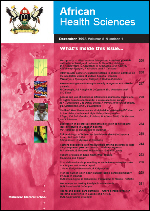
|
African Health Sciences
Makerere University Medical School
ISSN: 1680-6905
EISSN: 1680-6905
Vol. 16, No. 1, 2016, pp. 325-328
|
 Bioline Code: hs16044
Bioline Code: hs16044
Full paper language: English
Document type: Research Article
Document available free of charge
|
|
|
African Health Sciences, Vol. 16, No. 1, 2016, pp. 325-328
| en |
Rationing medical education.
Walsh, Kieran
Abstract
The purpose of this paper is to discuss the role of rationing in medical education. Medical education is expensive and there is a limit to that which governments, funders or individuals can spend on it. Rationing involves the allocation of resources that are limited.
This paper discussed the pros and cons of the application of rationing to medical education and the different forms of rationing that could be applied.
Even though some stakeholders in medical education might be taken aback at the prospect of rationing, the truth is that rationing has always occurred in one form or another in medical education and in healthcare more broadly. Different types of rationing exist in healthcare professional education. For example rationing may be implicit or explicit or may be based on macro-allocation or micro-allocation decisions. Funding can be distributed equally among learners, or according to the needs of individual learners, or to ensure that overall usefulness is maximised. One final option is to allow the market to operate freely and to decide in that way. These principles of rationing can apply to individual learners or to institutions or departments or learning modes.
Rationing is occurring in medical education, even though it might be implicit. It is worth giving consideration to methods of rationing and to make thinking about rationing more explicit.
Keywords
Medical education; rationing; cost
|
| |
© Copyright 2016 - African Health Sciences
|
|
